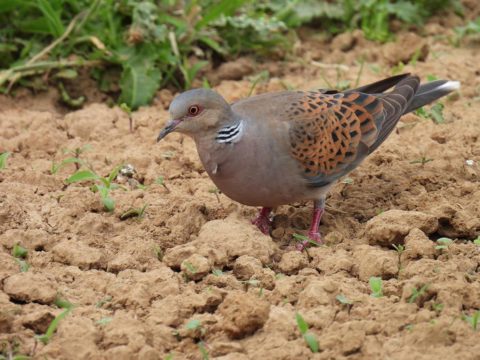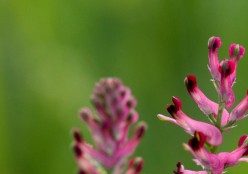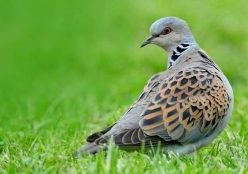Turtle Doves are ecologically unique, being Europe’s only long-distance migratory dove. They spend just a third of the year on their breeding grounds in Europe and spend the winter on their non-breeding grounds in sub-Saharan West Africa.
Turtle Dove numbers in the UK have plummeted by an estimated 99% since their peak in the late 1960s. Research has shown that a loss of breeding season habitats that provide seed food for the doves was the single most important factor in their decline.
Numbers have dropped across Europe, but the steepest declines have all been in north-west regions with the most heavily intensified agriculture. Until recently, hunting was also adding additional pressure on the Turtle Doves of Western Europe. The unsustainable numbers being killed would likely have prevented the breeding population from recovering, but thankfully this has now changed.
Food shortages on their breeding grounds
Seeds are really important for Turtle Doves – they feed almost entirely on seeds, mostly from annual and perennial plants. However, many of these plants have disappeared from our countryside, due to changes in agriculture. Parallel to the reduction in available food, the average number of chicks produced each year by each breeding pair of Turtle Doves nearly halved from the 1960s to the end of the century.
For this reason, a large component of Operation Turtle Dove’s work is focused on establishing feeding habitat over the species’ core UK breeding range in East Anglia and South-East England. Our advisors work with farmers and other land managers to help them manage their land for Turtle Doves. Please get in touch with your local advisor if you’d like to help.
Unsustainable levels of hunting on migration
All Turtle Doves breeding in western Europe, including the UK, migrate south through three countries where the species used to be legally hunted in large numbers: France, Spain and Portugal. Up to 2018, around one million Turtle Doves were legally hunted every autumn in just these three. Research clearly showed this was unsustainable and was preventing the recovery of the entire Western European breeding population.
The publication of an International Species Action Plan for the Turtle Dove in 2018, a huge cross-border project involving experts from fifty states within the Turtle Dove’s range, was a major milestone. It recognised the impacts of hunting and drove international conservation efforts, to end unsustainable levels of Turtle Dove hunting in Europe. The result was a sustainable management system, now adopted by the European Commission. This led directly to a halt in Turtle Dove hunting in France, Spain and Portugal in 2021, 2022, and 2023 and incredibly has effectively already saved the lives of three million Turtle Doves! At least one more year of hunting ban across these countries in 2024 is anticipated to be requested by the European Commission. Hunting at any level will only be allowed to resume when there is significant evidence of population recovery.
This should mean that the hunting of Turtle Doves in Western Europe never reaches unsustainable levels again. The same process is being developed for breeding populations further east that use different migratory flyways. As a direct result, in 2023 we saw the first major reduction in Turtle Dove hunting in Italy. Even better news for Turtle Doves!
Research shows that two other potential problems; illegal killing along the flyway and habitat loss on the West African wintering grounds currently aren’t significant issues for birds breeding in Western Europe (including UK). This allows us to focus resources on the two key issues.
Photo on right: Turtle Dove foraging in farmland, photo credit: Nicole Khan (rspb-images.com)








